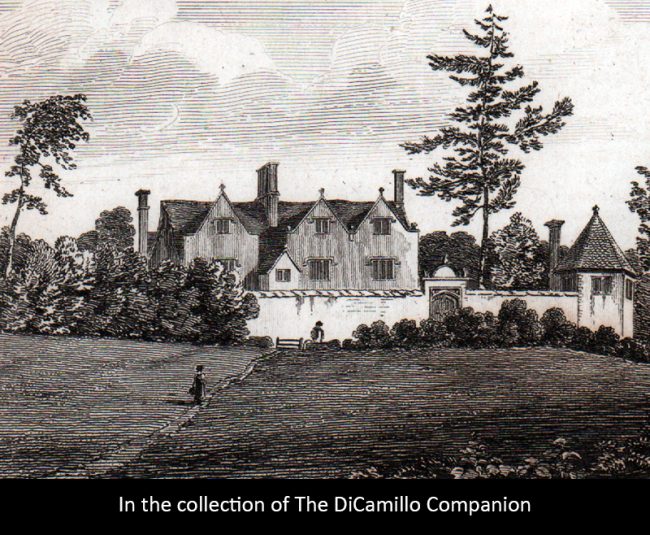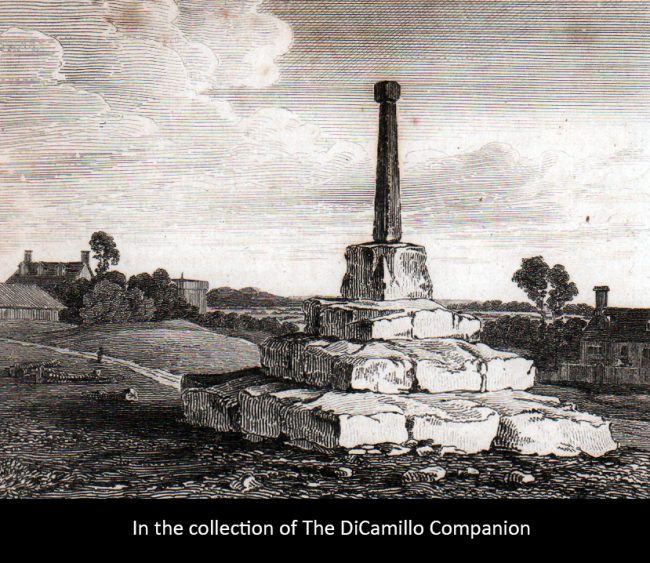
An 18th century engraving of the house from "The Gentleman's Magazine"

An 18th century engraving of the park from "The Gentleman's Magazine"
Earlier Houses: The current house sits on the site of monastic buildings of Abingdon Abbey and the Medieval house of Thomas Chaucer.
Built / Designed For: William Wickham
House & Family History: Garsington was built on land once owned by the son of the poet Geoffrey Chaucer, thus its original name of Chaucers. The current house was built (incorporating earlier monastic elements) by William Wickham in the 17th century and quietly slept, almost unaltered, until 1913, when it was acquired by Philip and Lady Ottoline Morrell, Garsington's most famous occupants. The Morrells found a house in a state of great disrepair, having been most recently used as a farmhouse; they spent considerable time and money in the 1920s restoring Garsington, leaving it much as it remains today. Philip and Lady Ottoline were at the center of the Bloomsbury Group and hosted a wide circle of their Bloomsbury friends at Garsington, including T.S. Eliot, D.H. Lawrence, Bertrand Russell, Robert Graves, Siegfried Sassoon, Lytton Strachey, and Aldous Huxley, who modeled the fictional Crome in his 1921 novel, "Crome Yellow," on Garsington, something for which Lady Olttoline never forgave him. She was also unhappy with D.H. Lawrence for modeling Hermione Roddice in his 1920 novel, “Women in Love," on her. In 1916, at the height of the Great War, the Morrells invited conscientious objectors, including Clive Bell, to come and work on the home farm at Garsington to avoid prosecution. In 1928 the Morrells sold the house to a Dr. Heaton, who later sold it to Sir John and Lady Wheeler Bennett. Leonard and Rosalind Ingrams acquired Garsington in 1982; between 1989 and 2010 the annual summer opera, the Garsington Opera, was hosted in the grounds. In 2011 Garsington Opera moved to Wormsley Park. In 2012 Garsington Manor, together with 11 acres, was listed for sale for £6.5 million.
Comments: Jeremy Musson called Garsington "one of the most charming smaller manor houses in England."
Garden & Outbuildings: Philip and Lady Ottoline Morrell restored the garden in the 1920s, creating landscaped gardens with the help of architect Philip Tilden. The Italian Garden has an ornamental pool enclosed by yew hedges, a loggia, a terrace, and is dotted about with statues. The wild garden features lime tree avenues, a stream, and a pond fed by a spring, complete with an island in the center. The parterre has 24 square beds with Irish yews at the corners.
Architect: Philip Tilden
Date: 1920sHouse Listed: Grade II*
Park Listed: Grade II*
Past Seat / Home of: SEATED AT EARLIER HOUSE: Thomas Chaucer, 15th century. SEATED AT CURRENT HOUSE: William Wickham, 17th century; Mr. Justice Wickham, until 1727; The Rev. William Wickham, 18th century. Thomas Drake Tyrwhitt-Drake, 18th century. Philip and Lady Ottoline Morrell, 1913-28. Dr. Heaton, 1928-54. Sir John and Lady Wheeler-Bennett, 20th century. Leonard Ingrams, 1982-2005.
Current Ownership Type: Individual / Family Trust
Primary Current Ownership Use: Private Home
House Open to Public: No
Historic Houses Member: No